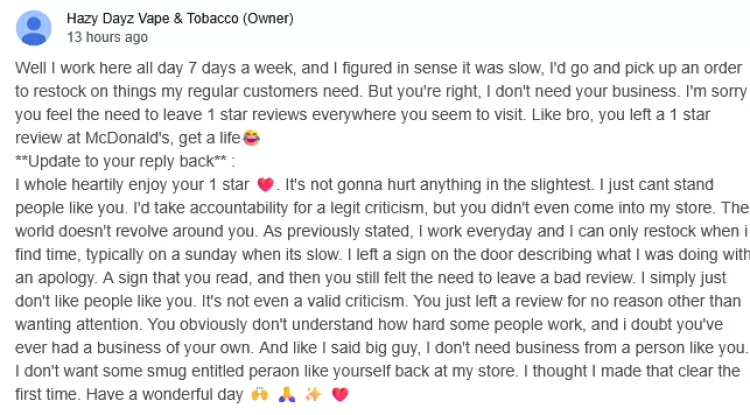Conspiracies That Were Actually True
Conspiracies have been around for as long as humans have been able to communicate with each other. From the ancient Greeks and Romans to the present day, people have always been fascinated by the idea that powerful groups are secretly working together to control the world.
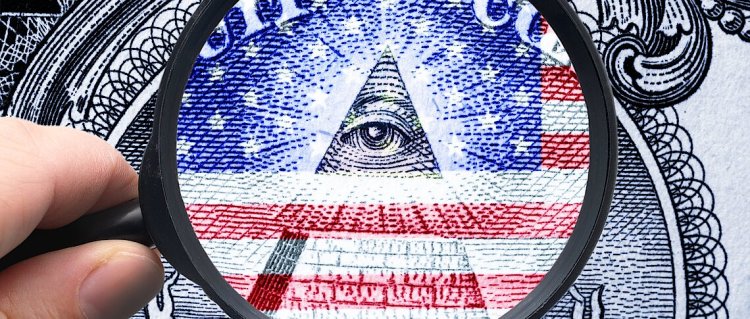
While most conspiracy theories are ultimately false, there have been a few cases where they have turned out to be true. Here are some of the top conspiracies that were actually true:
- The Tuskegee Syphilis Study
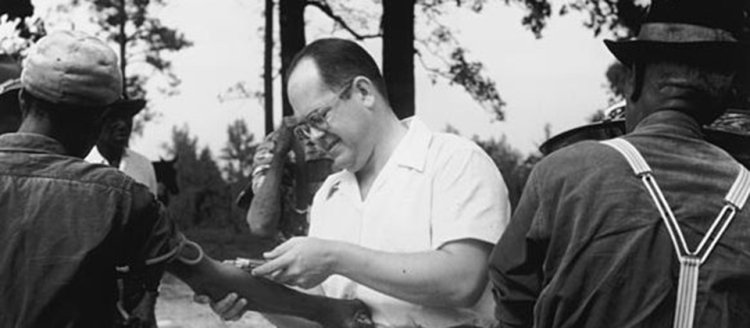
The Tuskegee Syphilis Study was a clinical study conducted between 1932 and 1972 by the United States Public Health Service (USPHS) and the Centers for Disease Control and Prevention (CDC) on a group of nearly 400 African American men with syphilis. The purpose of the study was to study the natural progression of untreated syphilis in the African American male population.
The study began in 1932, at a time when there was no known cure for syphilis. The USPHS recruited 600 men from Macon County, Alabama, for the study. Of these men, 399 had syphilis and 201 did not. The men were told that they were being treated for "bad blood," a local term used to describe a variety of ailments, including syphilis.
However, the men were not actually being treated for syphilis. Instead, researchers deliberately withheld treatment from them, even after penicillin became the standard treatment for syphilis in the mid-1940s. The researchers wanted to see how the disease would progress in the men if it was left untreated.
The men in the Tuskegee Study were not informed of the true nature of the study or the risks involved. They were not given informed consent to participate, and they were not allowed to withdraw from the study.
As a result of the study, many of the men developed serious complications from syphilis, including blindness, paralysis, and dementia. Many of the men also died from the disease. Their wives and children were also infected with syphilis, and many of them also died.
The Tuskegee Syphilis Study was a gross violation of human rights. It was one of the most unethical medical experiments ever conducted in the United States.
The study was finally exposed in 1972 by a journalist named Peter Buxtun. After the study was exposed, the USPHS ended the study and issued an apology. The USPHS also created a program to provide medical care and financial assistance to the survivors of the study and their families.
The Tuskegee Syphilis Study had a profound impact on the African American community. It eroded trust in the medical establishment and led to increased suspicion of medical research. The study also had a negative impact on the health of the African American community, as it contributed to the spread of syphilis and other sexually transmitted infections.
The Tuskegee Syphilis Study is a reminder of the importance of informed consent and ethical research practices. It is also a reminder of the need to protect the rights of all people, regardless of race or ethnicity.
2. The MKUltra Program
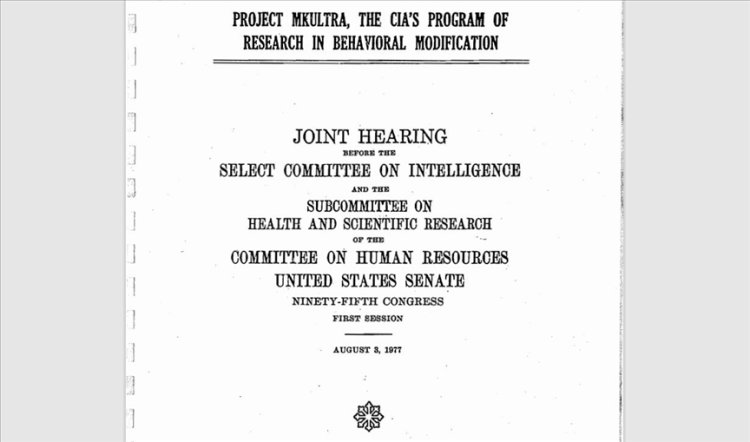
Project MKUltra was a top-secret CIA program that ran from the early 1950s to the late 1960s, designed to develop mind control techniques and drugs that could be used for interrogation and espionage. The program involved the use of a wide range of methods, including:
- Drugs: The CIA experimented with a variety of drugs, including LSD, psilocybin, mescaline, heroin, and barbiturates. Some of these drugs were administered to subjects without their knowledge or consent.
- Electroconvulsive therapy (ECT): ECT, also known as shock therapy, was used to induce amnesia and other psychological effects in subjects.
- Hypnosis: The CIA used hypnosis to attempt to implant false memories and suggestions in subjects.
- Sensory deprivation: Subjects were kept in isolation chambers or other sensory-deprived environments for days or even weeks at a time.
The MKUltra program was conducted at a variety of locations, including universities, hospitals, prisons, and CIA facilities. Many of the subjects were unwitting participants, and some suffered severe psychological and physical harm as a result of their involvement in the program.
The MKUltra program was first revealed to the public in 1975 by the Church Committee, a Senate committee investigating illegal activities by the CIA. The Church Committee found that the MKUltra program was "a vast, uncontrolled, and terrifying experiment" that had "caused severe and lasting harm to many of its subjects."
In 1973, CIA Director Richard Helms ordered the destruction of most of the MKUltra files, so the full extent of the program is unknown. However, the surviving documents reveal a number of disturbing details, including:
- The CIA experimented with LSD on hundreds of people, including prisoners, hospital patients, and even children.
- The CIA used hypnosis to try to create sleeper agents who could be programmed to carry out assassinations or other missions.
- The CIA developed a drug called BZ, which is a powerful hallucinogen that can be used to incapacitate people.
The MKUltra program is a dark chapter in CIA history. It is a reminder of the dangers of government overreach and the importance of protecting individual rights.
Here are some specific examples of MKUltra experiments that have been documented:
- At the McGill University Allen Memorial Institute in Montreal, Canada, Dr. Ewen Cameron conducted a series of experiments on patients without their consent. He used drugs, ECT, and sensory deprivation to try to erase their memories and personalities.
- At the University of Kentucky, Dr. Harry Harlow conducted experiments on monkeys to study the effects of maternal deprivation. He isolated baby monkeys from their mothers and subjected them to various forms of abuse.
- At Stanford University, Dr. Ronald Laing conducted experiments on students and other volunteers using LSD and other drugs. He was interested in studying the effects of these drugs on personality and social behavior.
The MKUltra program was a major violation of human rights, and it is a reminder of the importance of oversight and accountability in government programs.
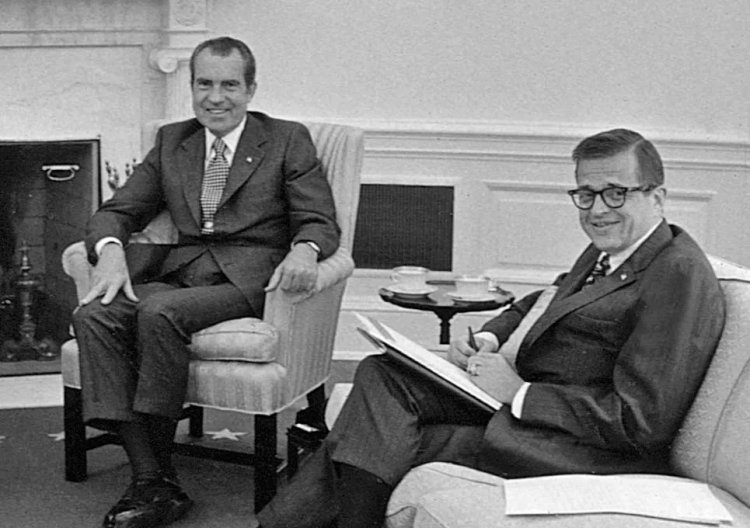
3. The Watergate Scandal
The Watergate scandal was a political scandal that occurred in the United States in the early 1970s. It involved a series of illegal activities by members of the Nixon administration, including burglary, wiretapping, and obstruction of justice. The scandal led to the resignation of President Richard Nixon in 1974.
The Break-In
The Watergate scandal began on June 17, 1972, when five men were arrested for breaking into the Democratic National Committee (DNC) headquarters at the Watergate complex in Washington, D.C. The men were caught planting wiretaps and stealing documents.
The five men were connected to the Committee to Re-elect the President (CRP), which was Nixon's re-election campaign committee. The CRP had been involved in a number of illegal activities, including spying on the Democrats and sabotaging their campaign efforts.
The Cover-Up
After the break-in, Nixon and his aides tried to cover up their involvement. They lied to the FBI and the public about their knowledge of the break-in and the CRP's illegal activities.
However, two Washington Post reporters, Bob Woodward and Carl Bernstein, began to investigate the break-in and the cover-up. They relied on a confidential source, known as "Deep Throat," who provided them with information about the scandal.
The Investigation
In July 1972, Nixon appointed a special prosecutor, Archibald Cox, to investigate the Watergate scandal. Cox subpoenaed tapes of Nixon's conversations with his aides, but Nixon refused to release them.
In October 1973, Nixon ordered the firing of Cox. This event, known as the "Saturday Night Massacre," led to widespread public outrage and calls for Nixon's impeachment.
In December 1973, the House Judiciary Committee voted to impeach Nixon on three articles: obstruction of justice, abuse of power, and contempt of Congress. However, before the Senate could vote on the articles of impeachment, Nixon resigned on August 9, 1974.
The Aftermath
The Watergate scandal was a major turning point in American history. It led to a decline in public trust in the government and a loss of faith in the presidency.
The scandal also had a lasting impact on American politics. It led to the passage of reforms such as the Ethics in Government Act and the Federal Election Campaign Act.
4. The Iran-Contra Affair
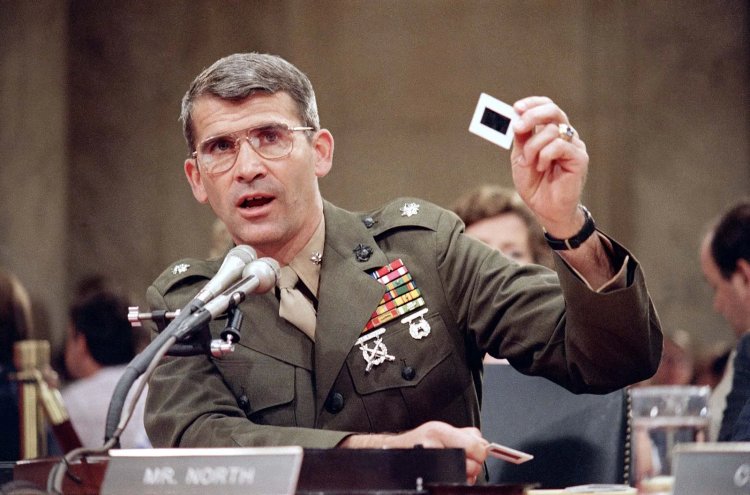
The Iran-Contra Affair is a complex and controversial episode in American history that unfolded during the 1980s. It was a scandal that shook the foundations of the Reagan administration, exposing a web of covert operations, questionable decision-making, and the sale of arms to an avowed enemy of the United States. This article explores the details of the Iran-Contra Affair, delving into the background, key players, unfolding events, and the far-reaching implications it had on American politics and foreign policy.
Background
To understand the Iran-Contra Affair, it is essential to grasp the context of the time. The 1980s marked the height of the Cold War, with the United States and the Soviet Union vying for global influence. The Reagan administration, led by President Ronald Reagan, took a hardline stance against communism and was deeply committed to combating Soviet influence in Central America, particularly in Nicaragua.
The Contras were anti-Sandinista rebels in Nicaragua, who were actively fighting the leftist Sandinista government. The Reagan administration believed that supporting the Contras was vital to prevent the spread of communism in Central America. However, Congress passed the Boland Amendment in 1984, which prohibited direct U.S. military assistance to the Contras. This restriction created a significant dilemma for Reagan's administration.
Key Players
-
Ronald Reagan: As the 40th President of the United States, Reagan was at the helm of the government during the Iran-Contra Affair. He had a hands-off approach to managing the details of the operation, which would later prove to be a significant point of contention.
-
Oliver North: Lieutenant Colonel Oliver North was a National Security Council staff member who played a central role in orchestrating the covert operation. He was responsible for facilitating the arms sales to Iran and the transfer of funds to the Contras.
-
John Poindexter: Admiral John Poindexter was Reagan's National Security Advisor, and he was closely involved in planning and executing the covert operation.
-
Robert McFarlane: McFarlane served as Reagan's National Security Advisor before Poindexter. He was involved in initiating the covert operation but later resigned from his position.
Unfolding Events
-
Arms Sales to Iran: The Iran-Contra Affair began with secret arms sales to Iran, which was in the midst of a brutal war with Iraq. The U.S. hoped to secure the release of American hostages held by Iranian-backed groups in Lebanon. The arms sales took place despite an arms embargo on Iran and the administration's public stance against dealing with terrorists.
-
Diversion of Funds: The proceeds from the arms sales to Iran were funneled to the Contras in Nicaragua, circumventing the Boland Amendment. This covert operation, which involved transferring funds from the sale of weapons to a third party, became the most controversial aspect of the scandal.
-
Public Exposure: The Iran-Contra Affair came to light in November 1986 when a Lebanese magazine revealed the arms sales to Iran. This revelation sparked a massive political scandal that engulfed the Reagan administration.
-
Congressional Hearings: Congress conducted extensive hearings to investigate the Iran-Contra Affair. Oliver North's testimony, in particular, captured the public's attention. North admitted to shredding documents and participating in illegal activities, which added fuel to the scandal.
-
Legal Fallout: Several individuals involved in the affair were indicted, including North and Poindexter. North was convicted on multiple charges, but his convictions were later overturned on appeal. President Reagan's popularity also suffered as a result of the scandal.
Implications and Legacy
The Iran-Contra Affair had significant implications for U.S. politics and foreign policy:
-
Presidential Authority: The scandal raised questions about presidential authority and the limits of executive power. Reagan claimed that he was unaware of the details of the operation, which led to a perception of a lack of accountability at the highest levels of government.
-
Erosion of Public Trust: The affair eroded public trust in the government, with many Americans feeling that their leaders were engaged in secretive and unethical activities.
-
Damage to U.S. Image: Internationally, the Iran-Contra Affair damaged the United States' reputation as a champion of democratic principles and the rule of law.
-
Lessons Learned: The Iran-Contra Affair prompted discussions about the role of covert operations, congressional oversight, and the need for checks and balances within the U.S. government.
The Iran-Contra Affair remains a pivotal moment in American history, illustrating the consequences of covert actions, the complexities of U.S. foreign policy, and the challenges of maintaining transparency and accountability in government. While the scandal eventually faded from public memory, it continues to serve as a cautionary tale about the dangers of unchecked executive power and the importance of maintaining a balance of power within the U.S. government.
5. The CIA's Involvement in the Cocaine Trade

Allegations of CIA involvement in the cocaine trade have been around for decades, but they gained widespread attention in the early 1990s with the publication of a series of articles in the San Jose Mercury News by reporter Gary Webb. Webb's articles alleged that the CIA had turned a blind eye to, and even assisted, drug traffickers who were funneling cocaine into the United States in order to raise money to support the Contra rebels in Nicaragua.
Webb's reporting was based on interviews with numerous sources, including former CIA officials, drug dealers, and law enforcement officers. He alleged that the CIA had provided Contra pilots with access to airfields in Florida and other parts of the United States, which the pilots used to transport cocaine into the country. He also alleged that the CIA had protected drug traffickers from prosecution and had even assisted them in laundering their drug profits.
Webb's articles were met with skepticism by many in the media and the government. The CIA denied all of his allegations, and some journalists accused him of shoddy reporting. However, Webb's articles also resonated with many Americans, who were already suspicious of the government's role in the Contra war and the crack cocaine epidemic that was sweeping the country at the time.
In 1996, the Department of Justice released a report on the CIA's involvement in the drug trade. The report found no evidence that the CIA had knowingly assisted drug traffickers, but it did find that the CIA had been aware of drug trafficking by Contra pilots and other individuals associated with the Contra movement. The report also found that the CIA had not done enough to prevent drug trafficking from occurring.
In the years since the publication of Webb's articles and the release of the Justice Department report, there have been numerous other investigations into the CIA's alleged involvement in the cocaine trade. These investigations have produced a mixed bag of results. Some have found evidence to support Webb's allegations, while others have not.
One of the most notable investigations was conducted by the Kerry Committee, a Senate subcommittee chaired by Senator John Kerry. In 1998, the Kerry Committee released a report that found that the CIA had been "aware of and in some cases tolerated" drug trafficking by Contra pilots and other individuals associated with the Contra movement. The report also found that the CIA had not done enough to prevent drug trafficking from occurring.
Another notable investigation was conducted by the CIA's own inspector general. In 1998, the inspector general released a report that found that the CIA had not knowingly assisted drug traffickers, but it did find that the CIA had been "complacent" in the face of drug trafficking by individuals associated with the Contra movement.
The CIA's involvement in the cocaine trade remains a controversial topic. Some people believe that the CIA knowingly assisted drug traffickers in order to raise money for the Contra rebels. Others believe that the CIA was simply incompetent and failed to do enough to prevent drug trafficking from occurring. There is no doubt, however, that the CIA was aware of drug trafficking by individuals associated with the Contra movement and that it failed to take adequate steps to stop it.
In addition to the allegations of CIA involvement in the Contra-cocaine scandal, there have also been allegations of CIA involvement in the drug trade in other parts of the world. For example, in 1990, a failed CIA anti-drug operation in Venezuela resulted in at least a ton of cocaine being smuggled into the United States and sold on the streets.
The CIA has consistently denied all allegations of involvement in the drug trade. However, the agency's history of secrecy and its willingness to bend the rules in the name of national security make it difficult to know for sure what role the CIA has played in the global drug trade.
6. The NSA's Mass Surveillance Program
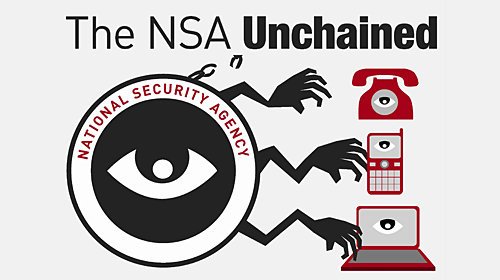
The NSA's Mass Surveillance Program is a secret program of the United States National Security Agency (NSA) to collect and analyze data on a massive scale. The program includes the collection of phone records, internet communications, and other data from millions of Americans without a warrant.
The program was first revealed in 2013 by whistleblower Edward Snowden, who leaked classified documents to the press. Snowden's revelations sparked a national debate about the balance between national security and privacy.
Types of Surveillance
The NSA's Mass Surveillance Program includes a number of different types of surveillance, including:
- Telephone metadata collection: The NSA collects the phone records of millions of Americans, including the date, time, and duration of calls, as well as the phone numbers involved.
- Internet communications surveillance: The NSA monitors the internet communications of millions of Americans, including emails, chats, and social media posts.
- Financial data surveillance: The NSA collects financial data on millions of Americans, including bank records and credit card transactions.
- Physical location tracking: The NSA tracks the physical location of millions of Americans using their cell phones and other devices.
Scope of the Program
The NSA's Mass Surveillance Program is one of the most comprehensive surveillance programs in the world. According to a 2015 report by the Privacy and Civil Liberties Oversight Board, the NSA collects the phone records of over 200 million Americans every day. The NSA also monitors the internet communications of millions of Americans, including emails, chats, and social media posts.
Justification for the Program
The US government justifies the NSA's Mass Surveillance Program on the grounds that it is necessary to protect national security and prevent terrorist attacks. However, critics of the program argue that it is a violation of the Fourth Amendment's protection against unreasonable searches and seizures.
Legal Challenges to the Program
The NSA's Mass Surveillance Program has been challenged in court a number of times. In 2013, the US Court of Appeals for the Second Circuit ruled that the NSA's bulk collection of phone records was illegal. However, the Supreme Court overturned that ruling in 2015.
In 2018, the US Court of Appeals for the Ninth Circuit ruled that the NSA's warrantless surveillance of Americans' international communications under Section 702 of the Foreign Intelligence Surveillance Act (FISA) was legal. However, the court also ruled that the NSA's collection of the metadata of Americans' domestic communications under Section 702 was illegal.
Impact of the Program
The NSA's Mass Surveillance Program has a number of impacts on Americans, including:
- Privacy concerns: The program raises serious concerns about the privacy of Americans. By collecting the phone records and internet communications of millions of Americans without a warrant, the government is able to track people's movements, associations, and interests without their knowledge or consent.
- Chilling effect on free speech: The program can also have a chilling effect on free speech. People may be less likely to express themselves freely if they know that the government is monitoring their communications.
- Potential for abuse: The program also raises concerns about the potential for abuse. If the government has access to the private communications of millions of Americans, it could potentially use that information to blackmail, intimidate, or harass people.
The NSA's Mass Surveillance Program is one of the most controversial government programs in the United States. The program raises serious concerns about privacy, free speech, and the potential for abuse. The debate over the program is likely to continue for many years to come.
7. The Panama Papers
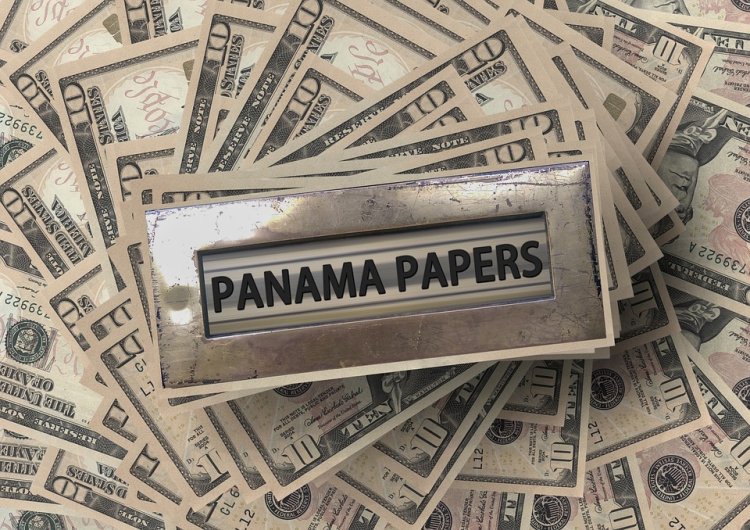
The Panama Papers are a collection of 11.5 million leaked documents from the Panamanian law firm Mossack Fonseca. The documents were obtained by a German newspaper and shared with a consortium of international media organizations, including the Guardian and the BBC. The Panama Papers were published in April 2016 and revealed the offshore holdings of thousands of wealthy individuals and public officials, including world leaders, celebrities, and business executives.
What are the Panama Papers?
The Panama Papers are a collection of 11.5 million leaked documents from the Panamanian law firm Mossack Fonseca. The documents, some dating back to the 1970s, were created by, and taken from, Mossack Fonseca, and compiled with similar leaks into a searchable database.
The documents contain personal financial information about wealthy individuals and public officials that had previously been kept private. The information includes the names of offshore companies, the identities of their owners, and the amounts of money they hold.
What do the Panama Papers reveal?
The Panama Papers reveal the myriad ways in which the rich can exploit secretive offshore tax regimes. The documents show that offshore companies are used to hide money from tax authorities, launder money, and evade financial sanctions. The documents also show that offshore companies are used to commit other crimes, such as fraud and bribery.
Who is named in the Panama Papers?
The Panama Papers name thousands of wealthy individuals and public officials, including world leaders, celebrities, and business executives. Some of the most notable names include:
- Vladimir Putin, President of Russia
- David Cameron, former Prime Minister of the United Kingdom
- Sigmundur Davíð Gunnlaugsson, former Prime Minister of Iceland
- Petro Poroshenko, President of Ukraine
- Salman bin Abdulaziz Al Saud, King of Saudi Arabia
- Lionel Messi, footballer
- Jackie Chan, actor
- David Beckham, footballer
- Shakira, singer
- Bono, singer
What impact have the Panama Papers had?
The Panama Papers have had a significant impact on the world. The leaks have led to investigations by law enforcement agencies in many countries, and have resulted in criminal charges being filed against a number of individuals. The leaks have also led to calls for reform of the offshore financial system.
The Panama Papers are a landmark leak that has exposed the hidden financial world of the wealthy and powerful. The documents have shown how offshore companies are used to hide money from tax authorities, launder money, and evade financial sanctions. The leaks have also shown how offshore companies are used to commit other crimes, such as fraud and bribery.
The Panama Papers have had a significant impact on the world, and have led to investigations by law enforcement agencies in many countries. The leaks have also led to calls for reform of the offshore financial system.
What can be done to prevent future leaks like the Panama Papers?
There are a number of things that can be done to prevent future leaks like the Panama Papers, including:
- Strengthening financial secrecy laws
- Making it more difficult to open and maintain offshore companies
- Requiring banks and other financial institutions to report suspicious activity to law enforcement
- Increasing government funding for tax enforcement and financial crime investigation
It is important to note that offshore companies are not illegal in themselves. However, they can be used for illegal purposes. It is important to ensure that offshore companies are subject to the same level of scrutiny as other businesses.
8. The Cambridge Analytica Scandal
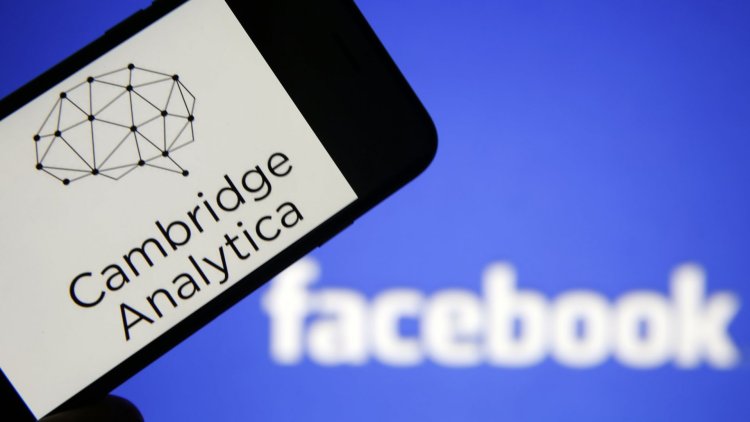
The Cambridge Analytica scandal was a major data privacy scandal that broke in 2018. It was revealed that the British political consulting firm Cambridge Analytica had improperly obtained data from up to 87 million Facebook users, without their consent, and used it to target them with political advertising.
The data was collected through a third-party app called "This Is Your Digital Life", developed by data scientist Aleksandr Kogan and his company Global Science Research in 2013. The app consisted of a series of questions to build psychological profiles on users, and collected the personal data of the users' Facebook friends via Facebook's Open Graph platform.
Kogan then passed the data to Cambridge Analytica, which used it to develop a psychographic profile of each user. This profile included information about their personality traits, political beliefs, and other factors. Cambridge Analytica then used this information to target users with personalized political ads.
The scandal broke in March 2018, when The Guardian and The New York Times published articles about the data misuse. The story quickly sparked a global outcry, and led to investigations by governments and regulators around the world.
Cambridge Analytica was found to have used the data to assist the 2016 presidential campaign of Donald Trump. The company also worked on the Brexit referendum campaign, but its role was more limited.
The scandal had a significant impact on both Facebook and Cambridge Analytica. Facebook was fined billions of dollars by regulators around the world, and its stock price fell sharply. Cambridge Analytica was forced to shut down.
The scandal also raised important questions about data privacy and the use of social media for political advertising. It highlighted the need for greater transparency and accountability from social media platforms, and for stricter laws to protect people's data.
Impact of the Cambridge Analytica Scandal
The Cambridge Analytica scandal had a number of significant impacts, including:
- Loss of trust in social media platforms: The scandal eroded public trust in social media platforms, such as Facebook. This led to a decline in user engagement and revenue for these platforms.
- Increased scrutiny of data privacy practices: The scandal led to increased scrutiny of data privacy practices by governments and regulators around the world. This has resulted in stricter laws and regulations to protect people's data.
- Greater awareness of data misuse: The scandal raised awareness of the potential for data misuse by companies and other organizations. This has led to increased demand for transparency and accountability from data collectors and processors.
- Impact on political campaigns: The scandal has had a significant impact on political campaigns. Politicians and campaigns are now more cautious about how they use data, and are more likely to obtain explicit consent from users before collecting or using their data.
The Cambridge Analytica scandal was a major wake-up call for the tech industry and for consumers. It highlighted the need for greater transparency and accountability from social media platforms, and for stricter laws to protect people's data.
The scandal also had a significant impact on political campaigns. Politicians and campaigns are now more cautious about how they use data, and are more likely to obtain explicit consent from users before collecting or using their data.
The Cambridge Analytica scandal is a reminder that we need to be more careful about how we share our data online. We should also be more aware of the potential for data misuse by companies and other organizations.
9. The Epstein-Maxwell Sex Trafficking Ring
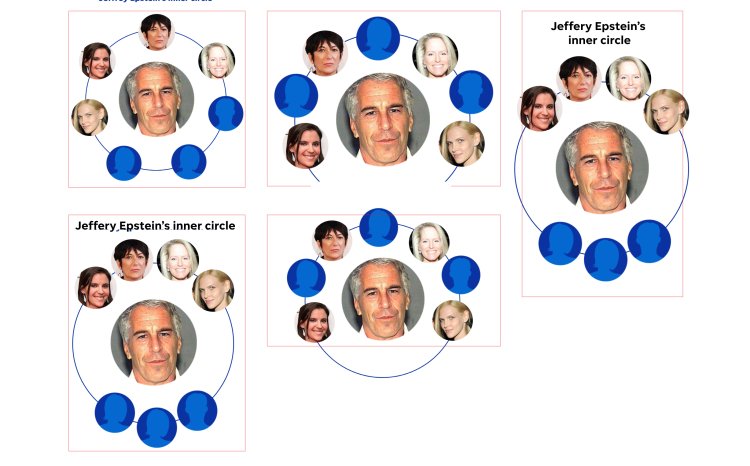
The Epstein-Maxwell sex trafficking ring is a harrowing and disturbing case that sent shockwaves through the world when it came to light. The story centers around financier and convicted sex offender Jeffrey Epstein and his close associate, Ghislaine Maxwell, who faced allegations of running a vast sex trafficking operation. This article will delve into the details of the Epstein-Maxwell sex trafficking ring, its origins, key players, modus operandi, legal aftermath, and the broader implications it holds for society.
Origins of the Epstein-Maxwell Relationship
The story begins in the early 1990s when Jeffrey Epstein, a financier with mysterious sources of wealth, met Ghislaine Maxwell, the daughter of British media magnate Robert Maxwell. The two formed a close relationship, which eventually evolved into a disturbing partnership that revolved around the sexual exploitation of young women.
Key Players
-
Jeffrey Epstein: Born in Brooklyn, New York, Epstein's rise to wealth was shrouded in mystery. He had a vast network of influential friends and acquaintances, including politicians, scientists, and celebrities. His wealth and connections allowed him to operate with relative impunity.
-
Ghislaine Maxwell: The daughter of media tycoon Robert Maxwell, Ghislaine was often described as Epstein's "right-hand woman." She played a crucial role in recruiting and grooming young girls, allegedly assisting in the trafficking operation.
Modus Operandi
The Epstein-Maxwell sex trafficking ring had a well-defined modus operandi:
-
Recruitment: Ghislaine Maxwell and her associates would allegedly recruit young, vulnerable girls from disadvantaged backgrounds. These victims were often lured with promises of money, education, and a better life.
-
Grooming: Once recruited, the victims were groomed into a life of sexual exploitation. They were often subjected to manipulative tactics, such as isolation from their families and an escalating series of sexual encounters.
-
Trafficking: Victims were transported between Epstein's residences, which included his New York City townhouse, Palm Beach mansion, and private island in the U.S. Virgin Islands. The transportation and logistics of moving victims were well-coordinated.
-
Abuse: Epstein and others within the network allegedly sexually abused the victims, with some alleging being forced into sexual encounters with prominent individuals.
-
Blackmail: It is alleged that Epstein collected compromising material on his associates to ensure their silence, further securing his position of power.
Legal Aftermath
The Epstein-Maxwell sex trafficking ring came to public attention in the mid-2000s when Epstein faced his first set of criminal charges in Florida. In 2008, he struck a controversial plea deal, the "non-prosecution agreement," which allowed him to plead guilty to two state prostitution charges, serve only 13 months in jail, and avoid federal charges.
However, the case resurfaced in 2019, leading to Epstein's arrest in New York on federal charges of sex trafficking. He died in his jail cell a month later, officially ruled a suicide, but sparking numerous conspiracy theories.
Ghislaine Maxwell was arrested in July 2020 and faced a trial that began in November 2021. She was accused of aiding Epstein's abuse of minors and lying under oath. On December 29, 2021, Maxwell was found guilty on five out of six charges, with her sentencing yet to occur.
Broader Implications
The Epstein-Maxwell sex trafficking ring has far-reaching implications for society, law enforcement, and the justice system:
-
Abuse of Power: The case highlights how powerful individuals can manipulate the justice system, exploiting legal loopholes to escape severe consequences.
-
Vulnerable Victims: It underscores the need for society to protect vulnerable individuals and educate them about the dangers of exploitation and trafficking.
-
#MeToo Movement: The Epstein-Maxwell case contributed to the broader conversation about sexual abuse, leading to more survivors coming forward and demanding justice.
-
Accountability: The case has prompted a call for greater accountability for those in power and has spurred conversations about reforming the justice system to ensure fair and equitable outcomes.
The Epstein-Maxwell sex trafficking ring represents a chilling example of how wealth, connections, and manipulation can allow individuals to perpetrate heinous crimes. While Epstein is no longer alive to face justice, the case of Ghislaine Maxwell provides an opportunity for the legal system to hold those involved accountable. It also serves as a stark reminder of the ongoing need to protect vulnerable individuals from sexual exploitation and abuse and to ensure that justice is blind, regardless of one's social or economic standing.
10. The Catholic Church's Cover-Up of Sexual Abuse
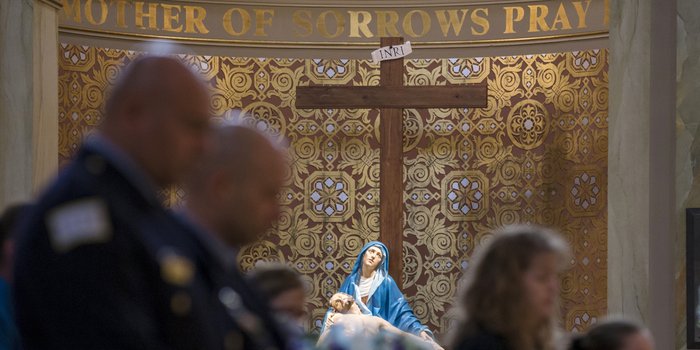
The Catholic Church's cover-up of sexual abuse is one of the most widespread and devastating scandals in modern history. For decades, church officials have systematically protected abusive priests, moving them from parish to parish and enabling them to continue their crimes. As a result, thousands of children have been sexually abused by priests, and many more have been harmed by the church's failure to protect them.
The cover-up began in the early 1950s, when church officials first became aware of the problem of clerical sexual abuse. At the time, church leaders were more concerned with protecting the church's reputation than with helping the victims. They believed that if they admitted that priests were capable of sexual abuse, it would damage the church's credibility and lead to a loss of members.
As a result, church officials adopted a policy of secrecy and denial. They instructed priests to keep quiet about any sexual abuse that they committed or witnessed. They also refused to report abusive priests to the police or to take any other disciplinary action against them. Instead, they simply transferred abusive priests from one parish to another, where they were free to continue their crimes.
This policy of secrecy and denial continued for decades, and it allowed thousands of priests to sexually abuse children with impunity. In some cases, church officials even went so far as to destroy evidence of abuse and to threaten victims and their families if they spoke out.
The cover-up began to unravel in the early 1980s, when a number of victims began to come forward with their stories. At first, church officials continued to deny the allegations. However, as more and more victims came forward, and as the media began to cover the scandal, the church was forced to admit that there was a problem.
In 1985, the US Conference of Catholic Bishops issued a set of guidelines for dealing with clerical sexual abuse. These guidelines called for church officials to report abusive priests to the police and to remove them from ministry. However, the guidelines were not mandatory, and many church officials continued to ignore them.
In the 1990s, the number of victims who came forward with their stories increased dramatically. This was due in part to the work of a number of advocacy groups, such as Survivors Network of those Abused by Priests (SNAP). These groups provided support to victims and helped them to come forward with their stories.
The increased media attention to the scandal also led to a number of investigations by law enforcement agencies. These investigations resulted in the arrest and conviction of hundreds of priests. In some cases, church officials were also charged with crimes for their role in the cover-up.
The Catholic Church's cover-up of sexual abuse has had a devastating impact on the victims. Many victims have suffered from physical and emotional problems, including depression, anxiety, and post-traumatic stress disorder. Some victims have also turned to drugs or alcohol to cope with their pain.
The cover-up has also damaged the reputation of the Catholic Church. Many people have lost faith in the church, and some have even left the church altogether. The cover-up has also made it more difficult for the church to attract and retain priests.
The Catholic Church has taken some steps to address the problem of clerical sexual abuse. In 2002, the US Conference of Catholic Bishops adopted a new set of guidelines for dealing with clerical sexual abuse. These guidelines are mandatory, and they require church officials to report abusive priests to the police and to remove them from ministry.
The church has also established a number of programs to help victims of clerical sexual abuse. These programs provide counseling, support groups, and other forms of assistance.
However, despite these efforts, the problem of clerical sexual abuse remains a serious problem in the Catholic Church. In recent years, there have been a number of high-profile cases of clerical sexual abuse, and it is clear that the church still has a long way to go in addressing this problem.
The Catholic Church's cover-up of sexual abuse is a tragedy of epic proportions. It is a story of betrayal, deceit, and suffering. It is a story that has had a devastating impact on the lives of thousands of children. It is a story that must be told, so that we can learn from the mistakes of the past and prevent such a tragedy from happening again.
11. The FIFA Corruption Scandal

The FIFA Corruption Scandal was a major scandal involving widespread bribery, corruption, and money laundering within the Fédération Internationale de Football Association (FIFA), the governing body of international football (soccer). The scandal was uncovered in 2015 following a joint investigation by the United States Department of Justice and the Swiss Federal Office of Police.
The investigation found that FIFA officials had taken bribes and kickbacks totaling over $150 million over a period of more than two decades. The bribes were paid by sports marketing executives and other individuals in exchange for lucrative media and marketing rights to FIFA tournaments, including the World Cup.
The scandal also involved allegations of bribery and corruption in the bidding process for the 2018 and 2022 World Cups. The United States Department of Justice indicted 14 FIFA officials and five corporate executives on charges of racketeering, wire fraud, and money laundering in connection with the bidding process.
In addition to the criminal investigation, FIFA was also subject to an internal investigation by its own ethics committee. The ethics committee investigation found that FIFA President Sepp Blatter and FIFA Secretary General Jérôme Valcke had breached FIFA's code of ethics and recommended that they be banned from football for life.
The FIFA Corruption Scandal had a profound impact on the organization. Blatter and Valcke resigned from their positions, and FIFA was forced to implement a number of reforms in order to improve its governance and transparency.
Key events in the FIFA Corruption Scandal
- December 2010: The United States Federal Bureau of Investigation (FBI) begins investigating Chuck Blazer, a former FIFA executive committee member, for corruption.
- September 2015: The Swiss Federal Office of Police arrests seven FIFA officials at the Baur au Lac hotel in Zürich on charges of bribery and corruption.
- May 2015: The United States Department of Justice unseals an indictment charging 14 FIFA officials and five corporate executives on charges of racketeering, wire fraud, and money laundering.
- June 2015: Sepp Blatter and Jérôme Valcke are re-elected as FIFA President and FIFA Secretary General, respectively.
- July 2015: Blatter announces his resignation as FIFA President.
- September 2015: The FIFA Ethics Committee recommends that Blatter and Valcke be banned from football for life.
- December 2015: Blatter and Valcke are suspended from football for eight years.
- February 2016: Gianni Infantino is elected as the new FIFA President.
Impact of the FIFA Corruption Scandal
The FIFA Corruption Scandal had a significant impact on the organization and the sport of football as a whole. The scandal damaged FIFA's reputation and led to a loss of trust from sponsors and fans. It also raised serious questions about the integrity of the bidding process for major tournaments such as the World Cup.
In response to the scandal, FIFA has implemented a number of reforms in order to improve its governance and transparency. These reforms include:
- Introducing a new code of ethics for FIFA officials.
- Creating a new independent ethics committee.
- Disclosing more financial information.
- Limiting the length of terms that FIFA officials can serve.
The FIFA Corruption Scandal is a reminder of the importance of good governance and transparency in sports organizations. It is also a reminder of the need to hold those in power accountable for their actions.
The FIFA Corruption Scandal was a major scandal that rocked the world of football. The scandal exposed a culture of corruption and greed within FIFA, and it damaged the reputation of the organization and the sport as a whole.
FIFA has implemented a number of reforms in response to the scandal, but it remains to be seen whether these reforms will be sufficient to prevent future corruption. It is important for FIFA to continue to be transparent and accountable, and to work to build back the trust of fans and sponsors.
12. The Volkswagen Emissions Scandal

The Volkswagen emissions scandal, sometimes known as Dieselgate or Emissionsgate, was a major scandal surrounding the German automaker Volkswagen Group. In September 2015, the United States Environmental Protection Agency (EPA) issued a notice of violation of the Clean Air Act to Volkswagen Group after it was discovered that Volkswagen had installed software in millions of its diesel-powered vehicles that allowed them to cheat on emissions tests.
The software, known as a "defeat device," would detect when the vehicle was being tested and temporarily switch to a mode that reduced emissions. This allowed the vehicles to pass emissions tests while emitting up to 40 times more nitrogen oxides (NOx) than legally allowed under normal driving conditions.
NOx is a harmful pollutant that can cause respiratory problems, heart disease, and cancer. It is also a major contributor to smog and acid rain.
Volkswagen admitted to installing the defeat devices in millions of its vehicles worldwide, affecting a wide range of models, including the Jetta, Beetle, Golf, Passat, and Audi A3. The scandal affected an estimated 11 million vehicles worldwide, including nearly 500,000 in the United States.
Impact of the scandal
The Volkswagen emissions scandal had a significant impact on the company, both financially and reputationally. Volkswagen was fined billions of dollars by governments around the world and faced numerous lawsuits from customers and investors. The company also saw its sales decline sharply in the aftermath of the scandal.
In addition to the financial and reputational damage, the Volkswagen emissions scandal also had a negative impact on public trust in the automotive industry. The scandal raised questions about the effectiveness of emissions testing and the honesty of automakers.
Aftermath of the scandal
Volkswagen has taken a number of steps to address the emissions scandal and rebuild trust with its customers. The company has recalled all of the affected vehicles and offered to fix them for free. Volkswagen has also invested billions of dollars in developing new emissions control technologies and electric vehicles.
In 2017, Volkswagen pleaded guilty to criminal charges in the United States and agreed to pay a $2.8 billion fine. The company also agreed to spend billions of dollars to buy back or fix the affected vehicles.
As of 2023, Volkswagen is still working to recover from the emissions scandal. The company has made significant progress, but it is likely to take many years to fully rebuild its reputation.
Lessons learned
The Volkswagen emissions scandal is a cautionary tale for businesses of all sizes. It is important to be honest and transparent with customers and regulators. It is also important to have strong internal controls and ethics programs in place.
The scandal also highlights the importance of environmental protection. Automakers and other businesses must do their part to reduce emissions and protect the environment.
13. The Purdue Pharma OxyContin Crisis
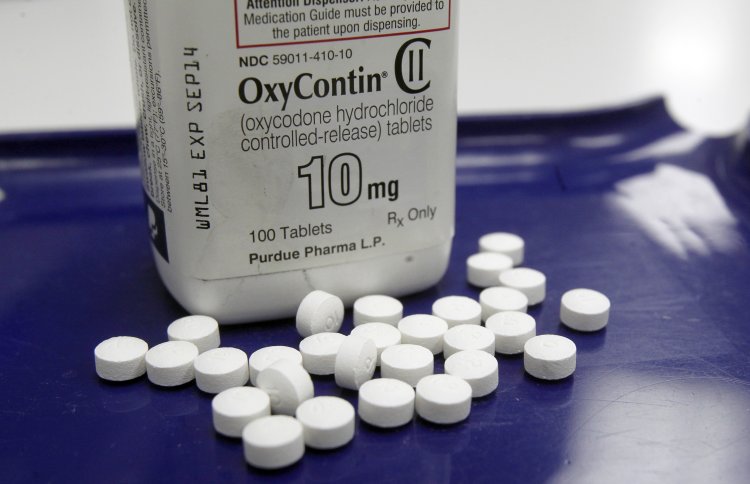
The Purdue Pharma OxyContin crisis is a public health crisis that has been devastating the United States for over two decades. OxyContin is a powerful prescription opioid painkiller that was first marketed by Purdue Pharma in 1996. The company aggressively marketed OxyContin as a safe and effective medication for chronic pain, even though they knew that it was highly addictive.
Purdue Pharma's deceptive marketing practices and the overprescription of OxyContin by doctors led to a wave of opioid addiction and overdose deaths in the United States. In 2021, over 100,000 people died from drug overdoses in the US, with opioids involved in 75% of those deaths.
Purdue Pharma's role in the crisis
Purdue Pharma has been accused of a number of unethical and illegal practices in connection with the OxyContin crisis, including:
- Misleading marketing: Purdue Pharma marketed OxyContin as a safe and effective medication for chronic pain, even though they knew that it was highly addictive. The company's marketing materials downplayed the risks of addiction and overdose, and overstated the benefits of the medication.
- Targeting high-risk prescribers: Purdue Pharma sales representatives targeted doctors who were known to prescribe high volumes of opioids. The company also offered financial incentives to doctors to prescribe OxyContin.
- Obstructing justice: Purdue Pharma has been accused of obstructing justice by destroying documents and refusing to cooperate with investigations into the OxyContin crisis.
The impact of the crisis
The Purdue Pharma OxyContin crisis has had a devastating impact on the United States. Opioid addiction has torn families apart, destroyed careers, and overwhelmed the healthcare system. The crisis has also had a significant economic impact, costing the US billions of dollars in lost productivity and healthcare costs.
Legal action against Purdue Pharma
Purdue Pharma has been facing a number of lawsuits from state and local governments, as well as individuals who have been harmed by OxyContin addiction and overdose. In 2019, Purdue Pharma filed for bankruptcy in an attempt to shield itself from these lawsuits.
In 2020, Purdue Pharma reached a bankruptcy settlement with state and local governments. Under the terms of the settlement, Purdue Pharma will pay out up to $8.3 billion over the course of 18 years to help fund opioid addiction treatment and prevention programs. The settlement also includes a number of other provisions, such as releasing internal documents about Purdue Pharma's marketing practices and creating a new company to sell OxyContin.
However, the bankruptcy settlement does not protect the Sackler family, the owners of Purdue Pharma, from lawsuits. The Sackler family has been accused of personally profiting from the OxyContin crisis while millions of Americans suffered. In 2021, a federal appeals court upheld a lower court ruling that granted the Sackler family immunity from lawsuits. However, the Supreme Court is currently considering whether to review this ruling.
The Purdue Pharma OxyContin crisis is a complex and tragic story. The company's deceptive marketing practices and the overprescription of OxyContin by doctors have had a devastating impact on the United States. While Purdue Pharma has reached a bankruptcy settlement with state and local governments, the Sackler family is still facing lawsuits from individuals who have been harmed by OxyContin addiction and overdose. It remains to be seen what justice will be served to the Sackler family and to the victims of the OxyContin crisis.
These are just a few of the many conspiracies that have turned out to be true. It is important to be aware of these conspiracies so that we can learn from them and prevent similar ones from happening in the future. If you have any that you want us to add please, comment below so we can research and add it to this list or if we made a mistake, we can fix it, thanks for taking the time to read!
What's Your Reaction?














